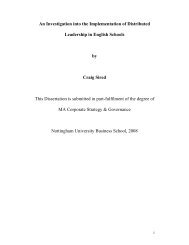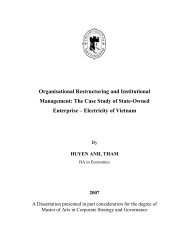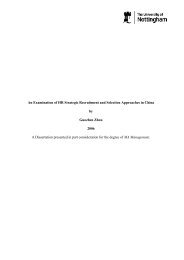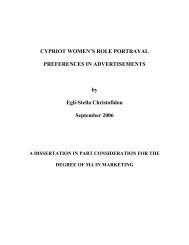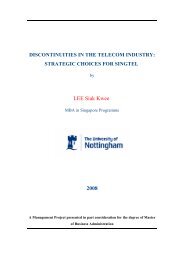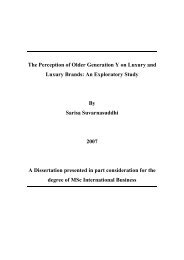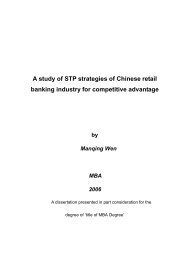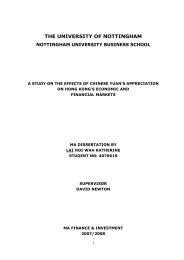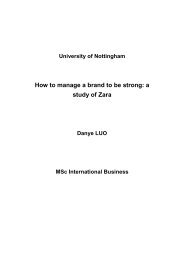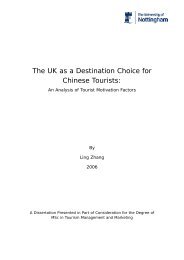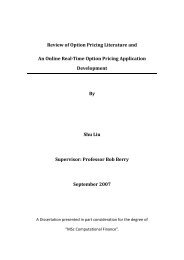application of real options valuation to r&d investments in ...
application of real options valuation to r&d investments in ...
application of real options valuation to r&d investments in ...
You also want an ePaper? Increase the reach of your titles
YUMPU automatically turns print PDFs into web optimized ePapers that Google loves.
project turns out <strong>to</strong> be unpr<strong>of</strong>itable.The first option is at the end <strong>of</strong> year 2, when Merck & Co. can choose whether or not<strong>to</strong> abandon. The second is at the end <strong>of</strong> year 4, and the third is at the end <strong>of</strong> year 7. Asall the <strong>options</strong> can only be exercised at a specific time (i.e. when the Phase ends), itcan be seen as a European option. Moreover, s<strong>in</strong>ce the third option only exist if thesecond option is open, and the second only exist when the first option is open, theycan be seen as a sequential compound option.Furthermore, as there are two k<strong>in</strong>d <strong>of</strong> uncerta<strong>in</strong>ty regard<strong>in</strong>g <strong>to</strong> this option, it can beseen as a compound ra<strong>in</strong>bow option. The <strong>valuation</strong> <strong>of</strong> a compound ra<strong>in</strong>bow option canbe calculated from a b<strong>in</strong>omial tree approach. However, as result <strong>of</strong> the complexity <strong>of</strong>this compound option, the <strong>valuation</strong> <strong>of</strong> this compound ra<strong>in</strong>bow option can be ratherdifficult. As will see later, there are three underly<strong>in</strong>g assets, which have five differentprobabilities <strong>of</strong> success for Phase III, and recomb<strong>in</strong>ed as three probabilities at Phase II,it would be very complicated <strong>to</strong> construct a s<strong>in</strong>gle b<strong>in</strong>omial tree <strong>in</strong> order <strong>to</strong> value thiscompound ra<strong>in</strong>bow option. Therefore, firstly, a simpler <strong>valuation</strong> approach is used, byvalu<strong>in</strong>g three separate compound <strong>options</strong> <strong>in</strong>dividually, and then comb<strong>in</strong><strong>in</strong>g the valueus<strong>in</strong>g their correspond<strong>in</strong>g probabilities. After this <strong>valuation</strong>, the compound ra<strong>in</strong>bowoption is valued by us<strong>in</strong>g a s<strong>in</strong>gle b<strong>in</strong>omial tree <strong>to</strong> compare the different results.5.3.1 Five variables that determ<strong>in</strong>e the value <strong>of</strong> the <strong>options</strong>The value <strong>of</strong> the underly<strong>in</strong>g asset – there are three underly<strong>in</strong>g asset <strong>in</strong> this case,which are $1200m, $345m, and $2250m respectively.The time <strong>to</strong> expiration – <strong>in</strong> this case, as it is a compound option, T 1 is 2, T 2 is 2, andT 3 is 3.Volatility – as mentioned earlier, for the time period between year 0 and year 7, thevolatility would be more project-related. In this case, past performance <strong>of</strong> LABPharmaceuticals can also be used as a reference. Here, volatility could be calculatedus<strong>in</strong>g the basic formula for standard deviation, and then transferred <strong>to</strong> yearly volatilityPage | 53



